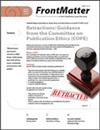穴居采收人Jimeneziella decui Avram的生态学和行为,1970(蛛形纲:蛛形纲)
IF 0.9
3区 农林科学
Q3 ENTOMOLOGY
引用次数: 0
摘要
摘要1970年,人类从位于古巴东部的四个相邻洞穴(Cueva de Majana, Cueva de los Golondrinos, Cueva Perla del Agua和Cueva de Máximo)中发现了人类的采石者Jimeneziella decui Avram。我们提出了Cueva de Máximo这个濒危物种种群的第一个生态数据。在洞穴主廊中估计的人口性别比例与1:1没有区别。空间分布均匀,2 - 3月个体密度为0.48只/m2, 11月个体密度为0.84只/m2。我们描述了两性之间和雄性之间的形态差异。初步的形态学和行为学数据表明,杜鹃可能存在两种雄性变种(“健壮”和“纤细”雄性)。体型纤细的雄虫4号腿上的电枢发育较差;尾肢、髋部和股骨的肿胀程度低于健壮雄鼠。我们对雄性之间互动的观察表明,强壮的雄性比苗条的雄性更具攻击性,苗条的雄性从不主动攻击强壮的雄性,但在某些情况下会对强壮的雄性的攻击做出回应。强壮的雄性对苗条的雄性表现出的非攻击性行为也表明,苗条的形态不仅仅是运动鞋,而是潜在的雌性模仿者,这也与苗条雄性的形态一致。生态和行为信息也表明,可能存在由强壮的雄性用它们发达的武器保卫的领土,以及雌性在其中的存在。本文章由计算机程序翻译,如有差异,请以英文原文为准。
Ecology and behavior of the troglobitic harvestman Jimeneziella decui Avram, 1970 (Arachnida: Opiliones)
Abstract. The troglobitic harvestman Jimeneziella decui Avram, 1970 is known from four neighboring caves (Cueva de Majana, Cueva de los Golondrinos, Cueva Perla del Agua, and Cueva de Máximo) located in eastern Cuba. We present the first ecological data on a population of this endangered species in Cueva de Máximo. The sex ratio of the population estimated in the main gallery of the cave was not different from 1:1. The spatial distribution observed was uniform, and the density of individuals was 0.48 individuals/m2 (February–March) and 0.84 individuals/m2 (November). We describe morphological differences between the sexes and between males. Preliminary morphological and behavioral data suggests the possible existence of two male morphs in J. decui (“robust” and “slender” males). The slender males possessed less developed armature on leg IV; and the chelicerae, coxa IV and femur IV were less swollen than robust males. Our observations on male-male interactions suggest that robust males are more aggressive than slender males, which never initiated an attack on robust males, but in some occasions responded to attacks from robust males. The non-aggressive behavior exhibited by robust males towards slender males also suggests that the slender morph is not only a sneaker, but potentially a female mimic, which is also consistent with the morphology of slender males. Ecological and behavioral information also suggests the possible existence of territories defended by robust males with their well-developed weapons, and the presence of females inside them.
求助全文
通过发布文献求助,成功后即可免费获取论文全文。
去求助
来源期刊

Journal of Arachnology
生物-昆虫学
CiteScore
2.20
自引率
10.00%
发文量
34
审稿时长
>12 weeks
期刊介绍:
The Journal of Arachnology publishes scientific articles reporting novel and significant observations and data regarding any aspect of the biology of arachnid groups. Articles must be scientifically rigorous and report substantially new information.
 求助内容:
求助内容: 应助结果提醒方式:
应助结果提醒方式:


